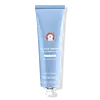What's inside
What's inside
 Key Ingredients
Key Ingredients

 Benefits
Benefits

 Concerns
Concerns

 Ingredients Side-by-side
Ingredients Side-by-side

Water
Skin ConditioningCaprylic/Capric Triglyceride
MaskingGlycerin
HumectantCetearyl Alcohol
EmollientGlyceryl Stearates
EmollientCetearyl Olivate
Leuconostoc/Radish Root Ferment Filtrate
AntimicrobialSorbitan Olivate
EmulsifyingPotassium Cetyl Phosphate
EmulsifyingSclerocarya Birrea Seed Oil
HumectantTetradecane
PerfumingButyrospermum Parkii Butter
Skin ConditioningAlbizia Julibrissin Bark Extract
MaskingDarutoside
Skin ConditioningHibiscus Sabdariffa Flower Extract
Skin ConditioningAvena Sativa Kernel Extract
AbrasiveXanthan Gum
EmulsifyingPotassium Sorbate
PreservativeSodium Dehydroacetate
PreservativeWater, Caprylic/Capric Triglyceride, Glycerin, Cetearyl Alcohol, Glyceryl Stearates, Cetearyl Olivate, Leuconostoc/Radish Root Ferment Filtrate, Sorbitan Olivate, Potassium Cetyl Phosphate, Sclerocarya Birrea Seed Oil, Tetradecane, Butyrospermum Parkii Butter, Albizia Julibrissin Bark Extract, Darutoside, Hibiscus Sabdariffa Flower Extract, Avena Sativa Kernel Extract, Xanthan Gum, Potassium Sorbate, Sodium Dehydroacetate
Dimethicone 1%
EmollientWater
Skin ConditioningButylene Glycol
HumectantCaprylic/Capric Triglyceride
MaskingDicaprylyl Carbonate
EmollientGlycerin
HumectantPentylene Glycol
Skin ConditioningCetearyl Alcohol
EmollientLauryl Laurate
Skin ConditioningGlyceryl Stearate
EmollientC12-16 Alcohols
EmollientColloidal Oatmeal
AbsorbentPolyglyceryl-6 Octastearate
EmulsifyingGlyceryl Behenate
EmollientBehenyl Alcohol
EmollientCeramide NP
Skin ConditioningCentella Asiatica Extract
CleansingAloe Barbadensis Leaf Juice
Skin ConditioningPhospholipids
Skin ConditioningCetyl Palmitate
EmollientSorbitan Palmitate
EmulsifyingHydroxyacetophenone
AntioxidantCarbomer
Emulsion StabilisingPhenoxyethanol
PreservativeCaprylyl Glycol
EmollientPalmitic Acid
EmollientHydrogenated Lecithin
EmulsifyingTromethamine
BufferingPhytosterols
Skin ConditioningLinoleic Acid
CleansingSorbitan Oleate
EmulsifyingPentaerythrityl Tetra-Di-T-Butyl Hydroxyhydrocinnamate
AntioxidantSodium Phytate
Ethylhexylglycerin
Skin ConditioningTriolein
Skin ConditioningPropanediol
SolventGlyceryl Dioleate
EmollientDimethicone 1%, Water, Butylene Glycol, Caprylic/Capric Triglyceride, Dicaprylyl Carbonate, Glycerin, Pentylene Glycol, Cetearyl Alcohol, Lauryl Laurate, Glyceryl Stearate, C12-16 Alcohols, Colloidal Oatmeal, Polyglyceryl-6 Octastearate, Glyceryl Behenate, Behenyl Alcohol, Ceramide NP, Centella Asiatica Extract, Aloe Barbadensis Leaf Juice, Phospholipids, Cetyl Palmitate, Sorbitan Palmitate, Hydroxyacetophenone, Carbomer, Phenoxyethanol, Caprylyl Glycol, Palmitic Acid, Hydrogenated Lecithin, Tromethamine, Phytosterols, Linoleic Acid, Sorbitan Oleate, Pentaerythrityl Tetra-Di-T-Butyl Hydroxyhydrocinnamate, Sodium Phytate, Ethylhexylglycerin, Triolein, Propanediol, Glyceryl Dioleate
 Reviews
Reviews

Ingredients Explained
These ingredients are found in both products.
Ingredients higher up in an ingredient list are typically present in a larger amount.
This ingredient is an emollient, solvent, and texture enhancer. It is considered a skin-softener by helping the skin prevent moisture loss.
It helps thicken a product's formula and makes it easier to spread by dissolving clumping compounds.
Caprylic Triglyceride is made by combining glycerin with coconut oil, forming a clear liquid.
While there is an assumption Caprylic Triglyceride can clog pores due to it being derived from coconut oil, there is no research supporting this.
Learn more about Caprylic/Capric TriglycerideCetearyl alcohol is a mixture of two fatty alcohols: cetyl alcohol and stearyl alcohol. It is mainly used as an emulsifier. Emulsifiers help prevent the separation of oils and products. Due to its composition, it can also be used to thicken a product or help create foam.
Cetearyl alcohol is an emollient. Emollients help soothe and hydrate the skin by trapping moisture.
Studies show Cetearyl alcohol is non-toxic and non-irritating. The FDA allows products labeled "alcohol-free" to have fatty alcohols.
This ingredient is usually derived from plant oils such as palm, vegetable, or coconut oils. There is debate on whether this ingredient will cause acne.
Due to the fatty acid base, this ingredient may not be Malassezia folliculitis safe.
Learn more about Cetearyl AlcoholGlycerin is already naturally found in your skin. It helps moisturize and protect your skin.
A study from 2016 found glycerin to be more effective as a humectant than AHAs and hyaluronic acid.
As a humectant, it helps the skin stay hydrated by pulling moisture to your skin. The low molecular weight of glycerin allows it to pull moisture into the deeper layers of your skin.
Hydrated skin improves your skin barrier; Your skin barrier helps protect against irritants and bacteria.
Glycerin has also been found to have antimicrobial and antiviral properties. Due to these properties, glycerin is often used in wound and burn treatments.
In cosmetics, glycerin is usually derived from plants such as soybean or palm. However, it can also be sourced from animals, such as tallow or animal fat.
This ingredient is organic, colorless, odorless, and non-toxic.
Glycerin is the name for this ingredient in American English. British English uses Glycerol/Glycerine.
Learn more about GlycerinWater. It's the most common cosmetic ingredient of all. You'll usually see it at the top of ingredient lists, meaning that it makes up the largest part of the product.
So why is it so popular? Water most often acts as a solvent - this means that it helps dissolve other ingredients into the formulation.
You'll also recognize water as that liquid we all need to stay alive. If you see this, drink a glass of water. Stay hydrated!
Learn more about Water